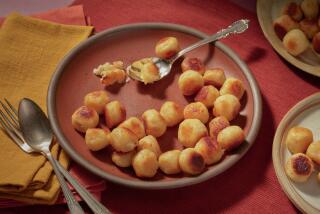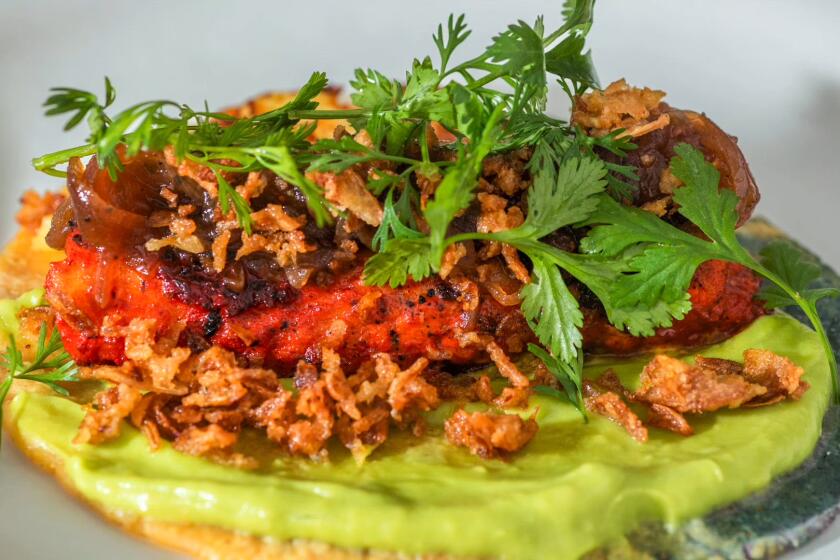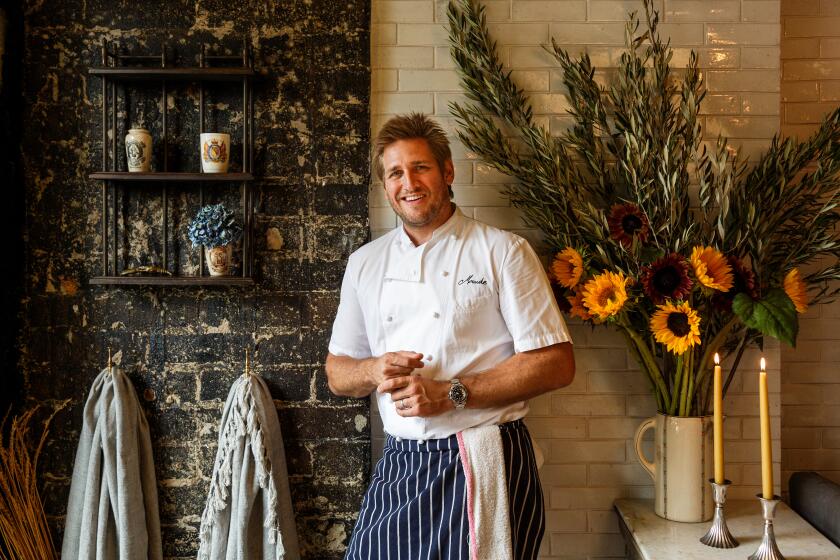Dehydrating isn’t just for hippies or apricots
The last time people I knew had a home dehydrator was the same time that a vegetarian dinner meant brown rice topped with enough cheese to wipe out Wisconsin. But my head was spinning after my latest canning and preserving class, and guess what I want for Hanukkah?
Our course guru, a.k.a. teacher Ernest Miller, had our class taste all sorts of things he’d made with a dehydrator that took a big leap from dried sliced fruit. For instance, we compared commercial garlic powder with some he’d made by dehydrating chopped garlic and then putting it through a spice grinder. We sampled a snack mix with the usual cereal and pretzels -- with the addition of dehydrated homemade sauerkraut, and one with dehydrated kimchi. We couldn’t get enough.
Miller made a fruit leather with apples, Greek yogurt and Grand Marnier. Not what the kids eat. And mushroom powder for topping French fries. Some of the dehydrated sauerkraut also became a powder. “You can make sausage with sauerkraut already inside. Fantastic!” he said.
The possibilities seem endless.
Dehydration, Miller said, is the earliest form of food preservation; it works because without water, the mold, bacteria and yeast cannot grow on the food to spoil it. The earliest dehydrator is the sun, of course, and that’s still used in commercial enterprises, but home cooks need to watch the temperature (at least 80 degrees) and moisture (60% humidity at most) in the air, as well as bugs, birds and dust. There are lots of home dehydrators; Miller likes the Excalibur box style. (Crafters use them for drying flowers, paint, clay and other items, too.)
Of course, all those products need to be stored, and one easy way is to put them in a freezer ZipLoc bag and use a straw to suck the air out. Then freeze, he said. Miller showed us some other ways to get the air out as well, including using a machine for vacuum sealing. For liquids, place a cookie sheet on an incline, place the bag with the open side toward the top and ease the air out. The result is a stackable bag.
Three important rules, he said, for freezing: “One, label. Two, label. And three, label.”
An update from an earlier class: The kosher-style pickles, half-sours, were delicious, and several of my classmates concurred. Pickles seem to be having a heyday, and here are a couple of places to find artisan versions: My friend, Rachael Narins has Perishable Pickles, and the chef Bruce Kalman has started Prime Pickle Co.
ALSO:
Where have all the pickles gone?
Twitter: @mmacvean
More to Read
Eat your way across L.A.
Get our weekly Tasting Notes newsletter for reviews, news and more.
You may occasionally receive promotional content from the Los Angeles Times.











